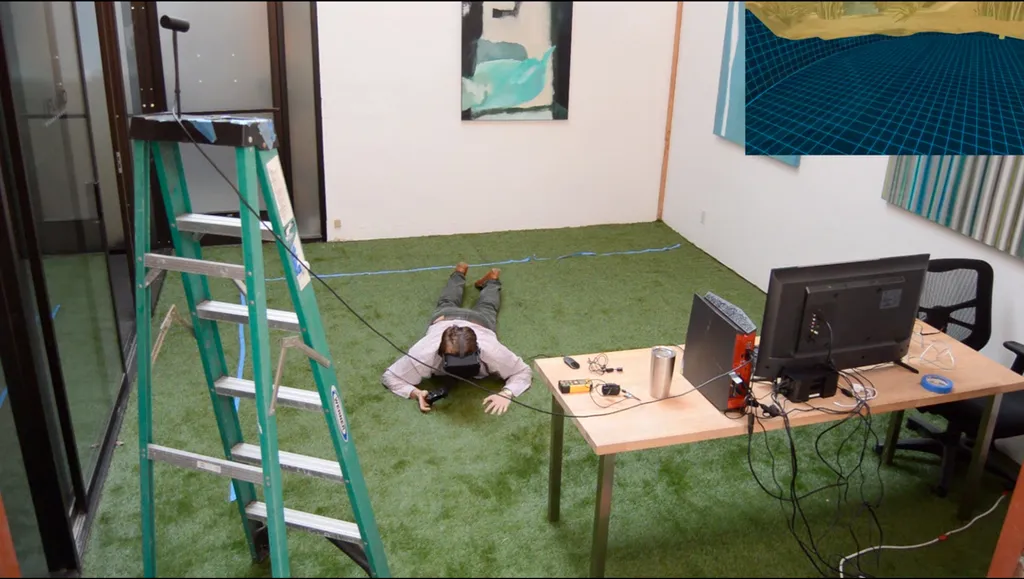Among the biggest debates in the virtual reality community surrounds the subject of “room scale” on the Rift, i.e. the ability to have the headset tracked throughout the room allowing the player to physically walk around their space. The terminology was first introduced by HTC at the Mobile World Conference debut of the HTC Vive in 2015. The HTC Vive brought with it the ability to walk around a 15 ft x 15 ft space with hand tracked controllers and was incredibly precise.
Overnight the Vive was hailed as the headset to beat, offering immersion that was unmatched at the time. Sometime between the announcement and Oculus’ unveiling on stage later that year, Oculus decided to accelerate the release of their hand tracked Oculus Touch controllers revealing them much earlier than originally planned – igniting the conversation around the topic, ‘can the Rift also be tracked at a room scale?’
I attempted to answer the question at E3 that year, recording a video of us walking around a tracked room. But that test was on prototype hardware, in controlled conditions – and most importantly was done with two cameras. We then tested the tracking again earlier this week using a standard desk configuration. The results were fairly outstanding as the camera tracked a relatively large playspace. But it was far from the idea camera placement for “room scale,” so I decided to do a second test – with a new camera position to get to the bottom of this question once and for all.
Placing the camera about 7 feet off the ground and pointed downward,I tested the camera in a room that was measured 13 ft x 14 feet total. Booting up Air Mech I set to walking about the room, stress testing the tracking by crawling on the ground moving quickly and exploring he whole space. To my surprise the single camera was able to track my movement rather flawlessly throughout the entire space from this position. Outside of a pocked below the camera and the areas limited by the Rift’s cord, the entire room was accessible.
Now before you go celebrating too much, notice one key thing – I bumped my head twice against objects in the room. This is due to the Rift’s lack of optimization around room scale. Unlike the Vive which has a camera on the front and a boundary system called “Chaperone” the Rift has no way to protect a user from slamming into walls, tables and chairs. Room scale Rifting is dangerous.
Now, of course Rift could eventually add a boundary system of their own and with a second camera and Touch controllers the experience could be fairly similar to that on the Vive, but we aren’t there yet. Only time will tell just how optimized the Rift becomes this generation for Room Scale. But for now I think we can put it to rest – it is possible.


























